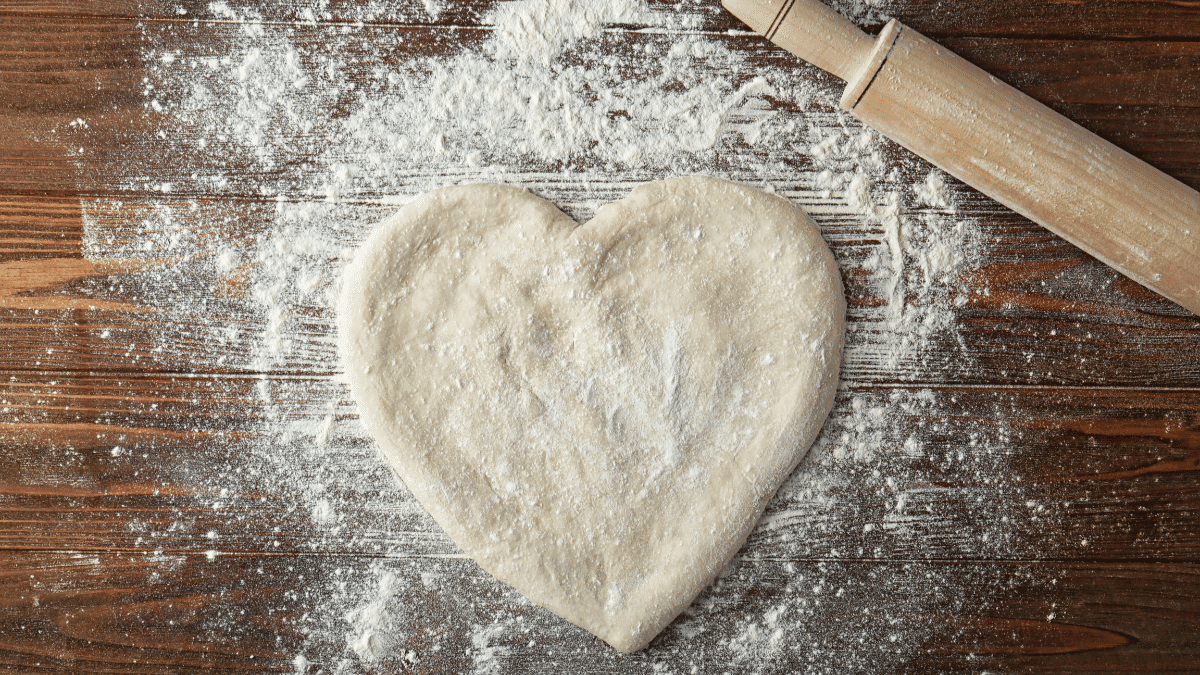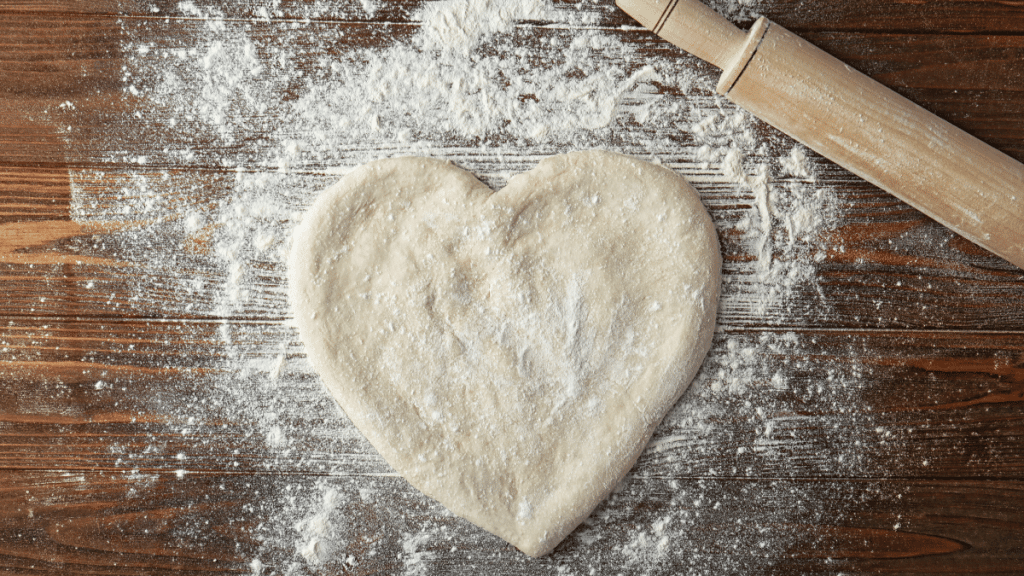Craving a pizza night that truly stands out? This Jamie Oliver-inspired pizza dough recipe is just the ticket. It calls for basic pantry staples—flour, yeast, water, and a little patience—yet delivers a golden, chewy crust that tastes like it came straight from a cozy Italian trattoria.
Whether you’re an experienced cook or a first-time dough maker, you’ll appreciate the simple method and foolproof results. One of the biggest perks of creating your own dough at home is the freedom to customize: experiment with wholegrain flour, sprinkle in a touch of dried herbs, or go classic with a plain, robust crust.
No more settling for lackluster crusts that compromise your favorite toppings. Instead, this recipe ensures each bite has that irresistible balance of crisp edges and soft, airy center.
Fire up your oven, roll out your dough, and let your culinary creativity shine through—because homemade pizza nights have never been more rewarding.
Key Takeaways:
- This pizza dough recipe by Jamie Oliver is made using common pantry ingredients, making it accessible for everyone.
- It offers a customizable base that allows you to experiment with different flours and seasonings to suit your taste.
- Proper kneading and using lukewarm water are vital for achieving a light and chewy crust.
- The dough can be stored in the fridge or freezer, providing flexibility for meal prep and future use.
- This recipe delivers a restaurant-quality pizza dough that elevates homemade pizza nights to a new level.
Types of Pizza Dough
Before entering into the kitchen, it’s vital to understand the various types of pizza dough you can create. Each type brings its own unique flavor and texture to your homemade pizza experience. Here’s a breakdown of some popular dough options:
| Classic Neapolitan | Traditional, airy, and soft with a chewy crust. |
| Thin Crust | Crispy and crunchy, perfect for a light pizza. |
| Deep Dish | Thick, hearty, and holds plenty of toppings. |
| Whole Wheat | Nutty flavor and a healthier option. |
| Gluten-Free | For those avoiding gluten, still flavorful and satisfying. |
After exploring these options, you’ll be ready to choose the perfect base for your pizza night!
Classic Neapolitan
Types of pizza dough focus on various regional preferences and techniques, but the Classic Neapolitan stands out. This dough shines with a simple blend of flour, water, yeast, and salt, creating a light, chewy crust that is hard to beat. With its characteristic puffy edges and soft center, it’s the foundation for a truly authentic pizza experience.
Whole Wheat Variation
On the other hand, if you’re looking to amp up the nutrition factor, the Whole Wheat Variation is a fantastic choice. This version replaces traditional white flour with whole wheat flour, offering a nutty flavor and additional fiber, making your pizza not just delicious but also a bit healthier. It’s a win-win!
Understanding the Whole Wheat Variation means knowing that you’re not just swapping flours; you’re actually enhancing nutritional value in every bite. Whole wheat flour brings higher fiber content, which can aid digestion, and it adds a complex flavor profile that can elevate your pizza game. The best part? You won’t compromise on taste while making a more wholesome choice. This dough still rises beautifully, giving you that crispiness you love with a heartier twist. Just think about it—creating meals that are both satisfying and align with your health goals. That’s how you hustle for flavor while keeping it real!

Ingredients
Method
- Begin by sifting your flour (or flours) together with the salt onto a clean work surface. Shape the mixture into a mound, and make a well in the center.
- In a jug, combine the yeast, sugar, and oil with about 650ml of lukewarm water. Let this mixture sit for a few minutes, then carefully pour it into the well. Use a fork to gradually pull the flour into the liquid from the edges, swirling until it forms a loose dough. Once it starts holding together, switch to your clean, flour-dusted hands to incorporate the remaining flour. Knead thoroughly until the dough feels smooth and springy.
- Place this dough ball in a large bowl dusted with flour, then sprinkle a little extra flour on top. Cover the bowl with a damp cloth and set it in a warm spot for about an hour, or until the dough has doubled in size.
- Next, move the dough to a flour-dusted surface. Knead it briefly to knock out the air—often called “knocking back” the dough. Use it right away or wrap it in clingfilm and refrigerate (or freeze) for future use.
- If you’re baking immediately, divide the dough into as many portions as you’d like—this quantity usually makes six to eight medium pizzas. It’s best to roll them out about 15 to 20 minutes before cooking.
- Avoid rolling them too early, as the dough can dry out. If you need to plan ahead, keep the dough covered with clingfilm in the fridge. Alternatively, you can roll the pizzas into rough circles (about 0.5cm thick) on lightly oiled and flour-dusted foil, stack them up, cover with clingfilm, and pop them into the fridge until you’re ready.
Enjoy the satisfaction of making your own pizza dough, knowing you’ve got a perfect base for layering up your favorite toppings. It’s a simple pleasure that never loses its magic.
Why This Jamie Oliver Pizza Dough Recipe is a Must-Try
If you’ve ever wondered what sets this Jamie Oliver Pizza dough Recipe apart, the answer lies in its reliable consistency and burst of flavor.
By using quality ingredients and a hands-on kneading approach, you create a dough that rises beautifully and bakes into a light yet chewy base.
There’s something wonderfully satisfying about turning a few pantry staples into a dough that can rival your favorite pizzeria’s crust.
Tips for Perfecting Your Dough
Unlike many home cooks, you can elevate your pizza game by mastering a few simple techniques. To ensure you achieve a perfect dough every time, consider these pointers:
- Use lukewarm water to activate your yeast.
- Knead with flour-dusted hands for that delicious chewiness.
- Store your dough in the fridge or freezer for later use.
After following these tips, you’ll be well on your way to a pizza night that delivers the satisfaction of a true Italian trattoria.
Yeast Activation
On your journey to the perfect pizza dough, activating your yeast is important. Use lukewarm water—about 110°F—as it helps to awaken the yeast’s full potential. This step not only ensures a good rise but also gives your crust that delightful texture—you want that golden, chewy goodness!
Ideal Rising Conditions
Ideal conditions for your dough’s rise make all the difference. You’ll want to keep it in a warm, draft-free area. This prevents the dough from stalling and creates an environment where it can thrive and double in size.
With the right space, your dough will take on a life of its own! Look for a warm spot, like near but not directly on, a preheated oven or in a sunny nook. If your dough doesn’t rise adequately, it’s not going to achieve that fluffy texture you crave. So, provide it with the love and warmth it deserves, and you’ll be rewarded with a pizza crust reminiscent of your favorite pizzeria!
Factors Affecting Dough Quality
Now, when you probe making Jamie Oliver’s pizza dough, a few pivotal factors can make or break your masterpiece. Pay attention to these elements:
- Flour Type
- Water Temperature
- Kneading Technique
Knowing these elements will elevate your dough to that irresistible, pizzeria-quality level.
Flour Type
Affecting the overall texture and flavor of your pizza dough, the type of flour you choose is significant. Opt for high-protein bread flour to achieve that perfect rise and chewy crust. Wholegrain flour can offer a richer taste and added nutrients, but be mindful of the hydration levels as it absorbs more water.
Water Temperature
While selecting the right temperature for water is vital for yeast activation, you want to aim for lukewarm. Too hot, and you risk cooking your yeast, while cold water won’t bring it to life.
Impact of Water Temperature
| Temperature | Effect on Yeast |
|---|---|
| Too Hot (over 120°F) | Yeast dies; no rise |
| Optimal (100-110°F) | Yeast activates; ideal rise |
| Too Cold (under 70°F) | Yeast sluggish; slow rise |
Understanding the temperature of your water is a game-changer. Use lukewarm water for optimal yeast activation, ensuring your dough rises beautifully. Too hot, and you risk losing that precious yeast; too cold, and you’re left with a dough that doesn’t want to play. Aim for that sweet spot, and you’re on your way to making a killer crust!
Easy Ways to Store and Prep Ahead
It’s not always possible to make fresh pizza dough on the spot, so knowing how to store it is crucial.
If you’re working in advance, keep your Jamie Oliver Pizza dough in the fridge, tightly wrapped in clingfilm, to lock in moisture and flavor.
For longer storage, the freezer is your best friend. When you’re ready to cook, simply thaw it out, let it rest at room temperature, and enjoy the same delicious result.
Pros and Cons of Homemade Dough
Not every option is a win-win when it comes to making your own pizza dough. While crafting your dough can be a rewarding experience, it’s vital to know what you’re signing up for. Here’s a quick rundown:
| Pros | Cons |
|---|---|
| Freshness and flavor | Time-consuming process |
| Control over ingredients | Requires practice to perfect |
| Customizable recipes | Cleanup can be messy |
| Cost-effective | Timing challenges with rising |
| Hands-on cooking experience | Requires patience and attention |
Advantages of DIY
One of the best parts about making your own dough is the complete control it gives you over the ingredients. You can choose quality flour, add fresh herbs, and even experiment with wholegrain options, guaranteeing a mouthwatering crust that reflects your personal taste. Plus, there’s something incredibly satisfying about transforming basic pantry staples into a pizza that can beat any pizzeria.
Potential Drawbacks
An important caveat to consider is the time and effort it takes to make pizza dough from scratch. If you’ve got a busy schedule, finding a moment to knead and wait for the dough to rise can be challenging. But here’s the kicker: if you rush it and don’t give your dough enough time to rise, you risk a disappointing pizza night. And trust me, nobody wants to bite into a flat crust that skips that vital chewiness!
To optimize your pizza experience, you must be prepared for a little trial and error when honing your dough-making skills. Investing the time in patience will pay off. But if you can’t catch the right water temperature or let it rise long enough, you might end up with a crust that lacks that *golden, chewy perfection* you envisioned. So, gear up, hit the kitchen, and turn a few pantry staples into pizza greatness!
👨🍳 [DID YOU KNOW?] Some interesting facts about Pizza Dough
-
Flour Variety: Jamie’s recipe uses Tipo ’00’ flour, a finely milled Italian flour ideal for pizza. This type of flour contributes to a soft and elastic dough, helping to create that perfect chewy crust.
-
Yeast Activation: It’s essential to use lukewarm water to activate the yeast properly. If the water is too hot, it can kill the yeast, leading to dough that doesn’t rise as it should.
-
Kneading Technique: Kneading the dough develops gluten, which gives the dough its elasticity and contributes to a chewy, crispy texture after baking. This hands-on approach is crucial for achieving the signature pizza base.
-
Resting Time: Allowing the dough to rise and “knock back” helps create an airy, light dough. The longer it rests, the better the texture, as the yeast has more time to work its magic.
-
Freezing for Convenience: If you don’t want to make dough every time, you can freeze the dough. It can be stored in the freezer for up to three months—just let it thaw and rest before use for the same delicious result.
Quick Family Pizza: Recipe by Jamie Oliver
People Also Ask
Can I use whole wheat flour instead of all-purpose flour for the Jamie Oliver Pizza Dough Recipe?
How long should I let the dough rise?
Can I make the pizza dough ahead of time?
Why is it important to use lukewarm water for the yeast?
What toppings pair well with this pizza dough?
Looking for more Jamie Oliver recipes? Check out our full collection.


Excelente 🙂